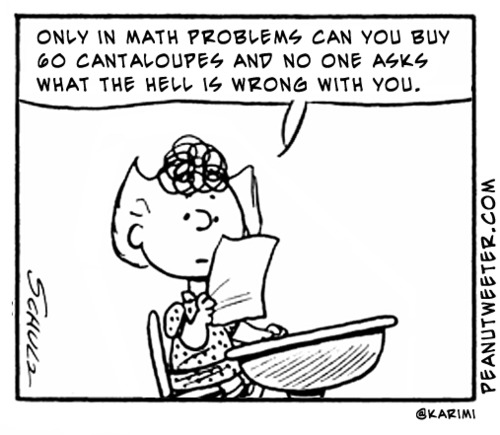The issue of language in the math classroom is especially acute when it comes to word problems. When helping districts analyze their assessment data, it is almost inevitable that we will find struggles in standards related to word problems, especially 2-step word problems.
In my experience, this is because the English language is not built well for explaining mathematical thoughts. This blog post covers difficult language structures in the math classroom: from referents to the language of comparison to improbable problems.
Referring to What?
Unclear language can make it difficult for students to correctly identify the problem presented in the task. Take the following example:
There are 28 students in Ms. Martinez’s math class. That is 4 more than the number of students in Mr. John’s and Ms. Ko’s classes combined. How many students are there in all three classes combined?
Notice the “That is” at the beginning of the second sentence. What is “that”? Generally, “that” refers to a single object, but in this case, “that” refers to 28 students, a number, and a set. In my conversations with students regarding word problems, it often becomes clear that they have no idea what “that” is.
Linguists would call the “28 students in Ms. Martinez’s math class” the referent to “that” in the problem above. It is important to make students conscious of referents and help them learn to write problems that use referents.
Understanding these language structures is important for all reading. We refer to all sorts of things, ideas, and people when we talk and write, but referents are only one of the things that makes the word problem above tricky. The next culprit? The complex language of comparison.
The Language of Comparison
The language of comparisons is consistently challenging for most students. Take the phrase, “4 more than the number of students”, which will baffle some students. Or think of it this way, and create a picture with 3 more red circles than white circles. How many red circles would you expect people to draw? It could be any number.
Students must first understand the concept of comparison: a comparison is a number which represents a relationship. It takes practice to understand the concepts of difference and comparisons, even with physical materials to support our explanations.
Additionally, students must understand that the word “more” in this example indicates that they must use subtraction to find the number of students in the other two classes. “More” is an important word in the phrase, but it is even more important to understand the context in which it is used.
On the flip side of this, the word might have been “fewer.” A word that simply doesn’t get used very often, but which math curriculum and assessment writers like to get picky about. In most conversations I am ever in, “less” is the word people most often use for both countable and uncountable quantities.
I Solved the Problem, but it is Improbable…
The last critical issue with the above example is that the numbers in this problem do not make much sense: One class has 28 kids and the other two classes have only 12 each? This does not reflect our rostering experience in most schools.
After attempting to solve a problem, we often ask our students to ask themselves, “Does your answer make sense?” Sometimes, even I am not sure what the answer to that is. Perhaps it is one of those “only in math” kinds of things, which are, in my opinion, way too easy to find.
Looking to read more? We all struggle with how to engage all our students in mathematics and know that students with diverse language backgrounds can sometimes present particular challenges. This recent article from WIDA is a great example of best practice in action.
About the author, David Woodward:
I came to math education in a rather round-about way. My undergrad studies were in German and music, and my masters degree is in bilingual education and ESL. As a math instructional coach, I have become fascinated with the topic of language in the math classroom. Learn more about the company I founded and my background here.
About us and this blog
Our team and tools help schools implement standards-based grading, streamline assessment systems, and use meaningful data to drive decision-making.
Webinar: Number Sense Lens
Join David Woodward, lead author of the USNS Project, in this 1-hour webinar to learn how you can apply the Number Sense Lens framework to understand number sense development, informing planning, goal setting, and progress monitoring. The live event took place on November 9, 2022, at 2 pm EST.
More from our blog
See all postsForefront is the only assessment data solution optimized for classroom assessment results, leveraging these results to fuel instruction, PLCs, and grading. Elevate meaningful assessment data district-wide to transform how you understand and communicate about student learning across your schools.
Copyright © 2025 Forefront Education, Inc. All Rights Reserved.









